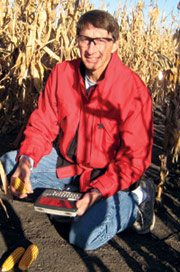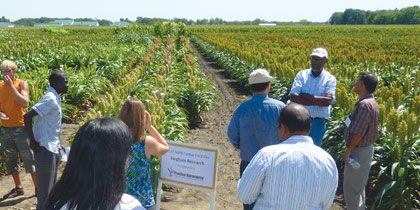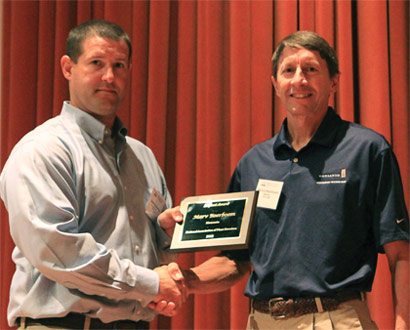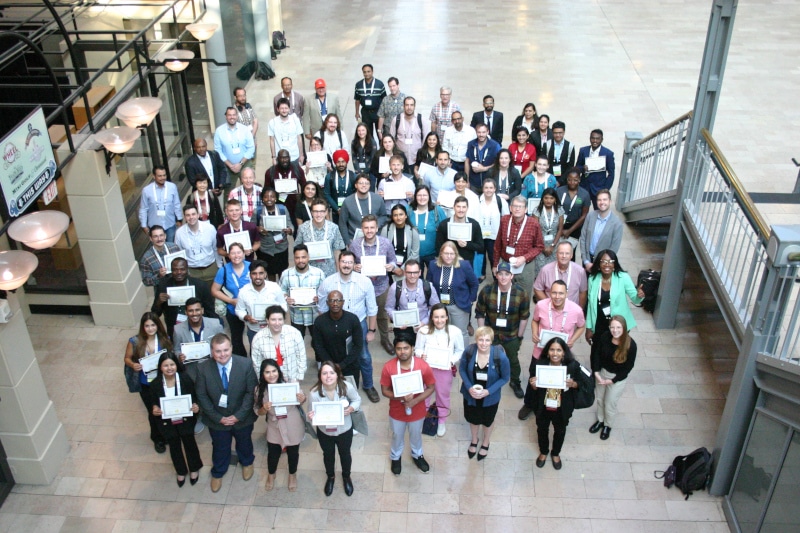Advancing the Future of Plant Breeding
The National Association of Plant Breeders exists to ensure plant breeding stays on the national radar—and has access to the resources it needs.
The National Association of Plant Breeders began as an initiative of the Plant Breeding Coordinating Committee following a Plant Breeding Symposium in 2005, to serve as the outreach group that represents plant breeders in federal, state, commercial and non-government organizations. Its mission, according to its website, is to “strengthen capacities for U.S. plant breeding research, technology, education and public awareness to meet needs for plants on which our nation and world rely—for food, feed, fiber, fuels, environmental stewardship, aesthetics, recreation and human health.”
This is a mission NAPB has not lost sight of during its first few years of existence, and one which all signs indicate will be its driving force into the future.
“This organization is one which endeavors to advocate the educational and research needs of plant breeding in the United States and to some extent also the world,” says David Stelly, president of NAPB. “Our organization is an offshoot from the Plant Breeding Coordinating Committee. That group saw a need for an advocacy role in the industry to address some significant shortcomings in our society.”
“It’s imperative that there be baseline funding to maintain capabilities in various crops.”
— David Stelly
One primary shortcoming, says Stelly, is the lack of public awareness about the importance of research and innovation in plant breeding—and the subsequent lack of dollars flowing into the long-term maintenance of breeding programs. “Plant breeding is particularly important in this regard, because plant breeding programs cannot be started and stopped on a whim. So it’s imperative that there be baseline funding to maintain capabilities in various crops.”
Stelly says the impact NAPB has had so far has been positive. Working with industry alliances, NAPB is beginning to be felt as a significant force advocating on behalf of seed research. “It’s been a sight to behold in terms of the level of interest engagement and activity from the commercial sector to provide both moral and financial support,” Stelly says. “The industry is very savvy in terms of what’s likely to take place. They are cognizant of the fact that the level of activity both in research and education in the country is quite insufficient relative to need, so they’ve been adamant supporters of this organization.”
As an example of one of NAPB’s mutually fruitful partnerships, Dow AgroSciences hosted the annual 2012 NAPB meetings. Don Blackburn, North American seeds and traits field breeding and development leader for Dow, says that NAPB’s goals align closely with Dow’s. “With our investment in plant breeding, Dow AgroSciences understands very well the shortage of plant breeders and became involved in the effort to solve this problem. We hosted these meetings because we need plant breeders to accomplish our business goals,” says Blackburn, “[and] because of our commitment to promote the training of new plant breeders and to provide a forum where plant breeding graduate students can gain experience in issues important to plant breeders and the seed industry.”
Huge Returns
According to Stelly, after months of work last year, NAPB is now established as a non-profit organization. “[It’s] a very important step for this group,” he says. “This year we intend to build upon that status and reinvigorate and expand on our operations as they relate to our advocacy and promotion of plant breeding needs in the country.”
The challenges, as Stelly sees them, are numerous—including an increasing global population, effects of climate change on the environment, fewer resources, and a general lack of capability in plant breeding over the last 30 or 40 years in the United States. In the face of these difficulties, the NAPB is on a spirited campaign to regenerate interest in plant breeding as a sector that is foundational to success in many other spheres.

Plant breeder Marv Boerboom says America’s crop production is one of the nation’s highlights. Photo courtesy of Marv Boerboom. |
“North American plant breeders have a resurgent effort to get the word out on the importance of plant breeders and the contribution plant breeding has to our national goals, our GNP, [and] the well-being of the population,” says Marv Boerboom, a line development breeder at Monsanto’s Olivia, Minn., corn research station, and the 2012 winner of NAPB’s Plant Breeding Impact Award. “Our crop production is one of the highlights of this nation, and NAPB has tried to escalate exposure to the fact that the small contribution in [research] dollars put into plant breeding [have given us] huge returns as a nation.”
As for the benefits NAPB provides to individual researchers involved in its work, says Boerboom, “it’s a two-way street—we need, as plant breeders, to support NAPB’s efforts and what they’re doing to improve dollars coming into the plant breeding effort, and recruiting people is going to help everyone in the long run.”
Recruitment will be key to NAPB’s strategies. Additionally, funding that arises from NAPB’s efforts will ultimately help to answer the demand for new talent in the sector. Attracting new talent remains a major priority for all players in the industry.
“It’s hard to find plant breeders who have good background experience for basic plant breeding and a well-rounded exposure to what can be expected in a plant breeding role,” says Boerboom. “We tend to have lost a lot of plant breeder opportunities simply because there aren’t as many people on the farms. A lot more students are coming from urban settings, so you need to have the long-term funding in place to establish a breeding effort at the university and to recruit and train these individuals.”
Despite the uncertainties on the horizon and the challenges the sector is facing, NAPB is in the vanguard of the seed industry’s outreach efforts, ensuring plant breeding stays on the radar of key decision-makers across the nation.
Julienne Isaacs
|
NAPB Award Winners At the joint annual meeting of the National Association of Plant Breeders and Plant Breeding Coordinating Committee, held this August in Indianapolis, Ind., the NAPB honored several industry leaders for their valuable contributions to plant breeding in the United States. Charles Stuber, coordinator of plant breeding programs and professor emeritus of genetics at North Carolina State University, won the NAPB’s Lifetime Achievement Award for pioneering research accomplishments that helped foster the development of DNA marker-based selection technologies in breeding. Sterling Brooks Blanche, chair of the NAPB awards panel presents Marv Boerboom, a line development breeder at Monsanto, the Plant Breeding Impact Award in August 2012. Photo courtesy of the NAP The NAPB Early Career Award, which recognizes outstanding young plant breeding scientists, was awarded to Michael Gore for his work developing genetic tools for the improvement of cotton and other crops. Gore, now a research geneticist with the USDA-ARS in Maricopa, Ariz., is also adjunct assistant research professor at the University of Arizona. Marvin Boerboom, a Monsanto line development breeder at the Olivia, Minn., corn research station, was awarded the Plant Breeding Impact Award, which annually recognizes an individual who has made exceptional advancements and contributions in the field of plant breeding. |












